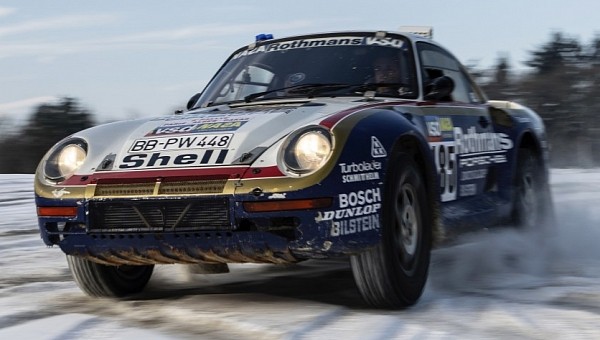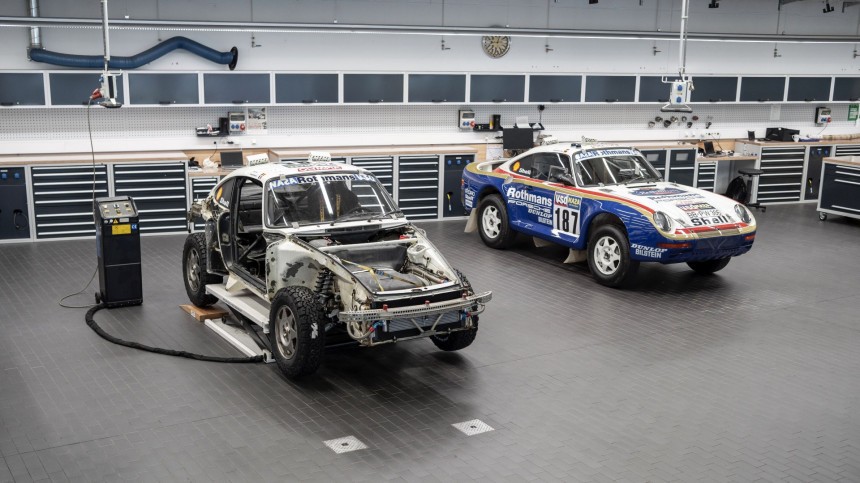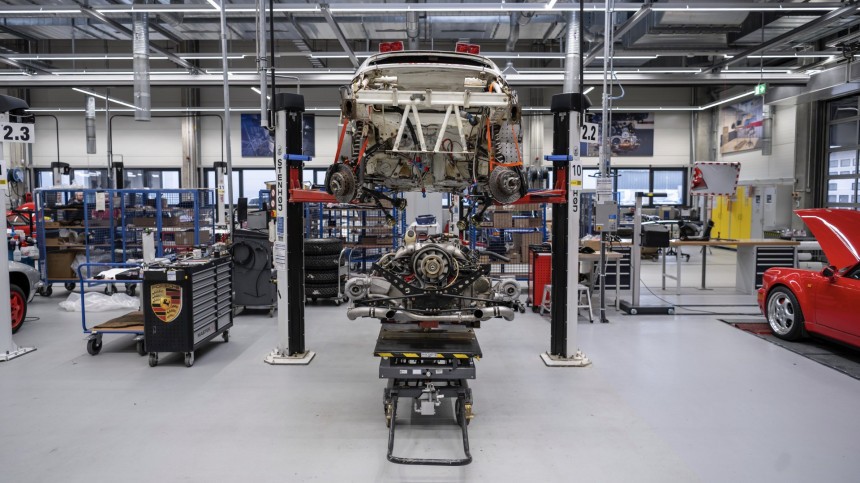Many years ago, Porsche ran a 959 in the Paris-Dakar Rally, which was held between Paris and Dakar back then. The marque deployed three vehicles, one of which was driven by Jacky Ickx and Claude Brasseur, and it achieved a one-two finish at that edition. The winning 959 crew was formed by Rene Metge and Dominique Lemoine, in an identical 959. Now, the vehicle that finished in second place has been restored by the German brand.
Now, this was not just a regular respray, but a carefully-thought-out restoration made by Porsche Heritage and Museum along with Porsche Classic. Yes, getting these two divisions together was serious, and it has taken months of work from the teams. It is not the kind of job that is available to the average person, mind you. The cost of this work is not mentioned, but the vehicle is almost priceless, as well so it does make sense.
The firm decided to restore the vehicle that finished the event in second place, while the first-place finisher is preserved in its original condition for as long as possible. The latter part was the goal of the other restoration, which is why things were more complicated than just stripping the vehicle down to the last nuts and bolts, changing what was damaged, and fitting it back together after a fresh coat of paint.
Instead of making the vehicle like new, the team decided to maintain its patina, which includes damage on the body, but took all its panels off to restore the mechanicals. This is described as a sympathetic refurbishment by Porsche, and the idea is to make the vehicle feel like it was just after finishing the event, in perfect mechanical order, but with marks left from the damage sustained during the race.
The German marque has decided to announce the fact that it completed this restoration just days after it let journalists drive its 911 Dakar in the desert. The latter is an amazing machine, and so was the 959, if not even more so amazing since it came with technologies that were not matched for many years in any vehicle.
As stunning as the 959 was, the project that led to it was incredibly costly at the time, and the firm got into serious financial difficulties after it stopped making the model that reportedly proved more expensive to make than it was sold for. Thankfully, the company survived, and the 959 remains the stuff of legend and fascination for car enthusiasts.
The flat-six engine found in the 959 was air and water-cooled and had twin turbochargers. The car featured all-wheel drive and adaptive suspension, along with trick aerodynamics. All the latter were expensive to develop and implement, but they contributed to an impressive performance that would be compelling even today.
Porsche's engineering teams overhauled the engine, transmission, as well as the rest of the drivetrain to ensure that this 959 is ready to run. According to the head of the Porsche Museum Workshop, Kuno Werner, the vehicle had muddy dirt inside it, even in its interior, which meant that it had experienced water, not just dust and dirt, throughout its adventure.
The restoration team was so careful that it decided to even keep the original zip ties in place, which were supposed to be temporary fixes, just to preserve the history of the vehicle and the story it tells. It completed the 14,000 km (about 8699 miles) event in second place, and it has only covered 18,000 km (about 11184 miles) since new.
Speaking of stories, in case you were wondering why this was not a one-two-three finish, the third vehicle entered in the iconic race was a support car that was driven by Roland Kussmaul, the project manager of the 959, and co-driven by Wolf-Hendrick Unger, and they finished in sixth place even if they were not professional racers. Porsche previously had a different support vehicle in the Dakar Rally.
Despite this, rust was found just in some areas of the underbody, while the paint was flaking a bit, but this is all something normal for a race car that competed over 35 years ago in what was and still is the most demanding rally-raid event of the time. Porsche first entered the Dakar rally in 1984, also with a 959, and won on the first try. The program was continued in 1985, when all three cars had failed to finish the race, but that changed in 1986 with a 1-2 finish, along with a sixth-place finish for the 'support car.'
Porsche will exhibit the 959 Paris-Dakar at the Retro Classics event, which is held in Stuttgart on February 23 through 26, 2023. Since we cannot all attend the event, we will get to see the car online, through six videos that will detail its restoration process.
The firm decided to restore the vehicle that finished the event in second place, while the first-place finisher is preserved in its original condition for as long as possible. The latter part was the goal of the other restoration, which is why things were more complicated than just stripping the vehicle down to the last nuts and bolts, changing what was damaged, and fitting it back together after a fresh coat of paint.
Instead of making the vehicle like new, the team decided to maintain its patina, which includes damage on the body, but took all its panels off to restore the mechanicals. This is described as a sympathetic refurbishment by Porsche, and the idea is to make the vehicle feel like it was just after finishing the event, in perfect mechanical order, but with marks left from the damage sustained during the race.
The German marque has decided to announce the fact that it completed this restoration just days after it let journalists drive its 911 Dakar in the desert. The latter is an amazing machine, and so was the 959, if not even more so amazing since it came with technologies that were not matched for many years in any vehicle.
The flat-six engine found in the 959 was air and water-cooled and had twin turbochargers. The car featured all-wheel drive and adaptive suspension, along with trick aerodynamics. All the latter were expensive to develop and implement, but they contributed to an impressive performance that would be compelling even today.
Porsche's engineering teams overhauled the engine, transmission, as well as the rest of the drivetrain to ensure that this 959 is ready to run. According to the head of the Porsche Museum Workshop, Kuno Werner, the vehicle had muddy dirt inside it, even in its interior, which meant that it had experienced water, not just dust and dirt, throughout its adventure.
The restoration team was so careful that it decided to even keep the original zip ties in place, which were supposed to be temporary fixes, just to preserve the history of the vehicle and the story it tells. It completed the 14,000 km (about 8699 miles) event in second place, and it has only covered 18,000 km (about 11184 miles) since new.
Despite this, rust was found just in some areas of the underbody, while the paint was flaking a bit, but this is all something normal for a race car that competed over 35 years ago in what was and still is the most demanding rally-raid event of the time. Porsche first entered the Dakar rally in 1984, also with a 959, and won on the first try. The program was continued in 1985, when all three cars had failed to finish the race, but that changed in 1986 with a 1-2 finish, along with a sixth-place finish for the 'support car.'
Porsche will exhibit the 959 Paris-Dakar at the Retro Classics event, which is held in Stuttgart on February 23 through 26, 2023. Since we cannot all attend the event, we will get to see the car online, through six videos that will detail its restoration process.









































